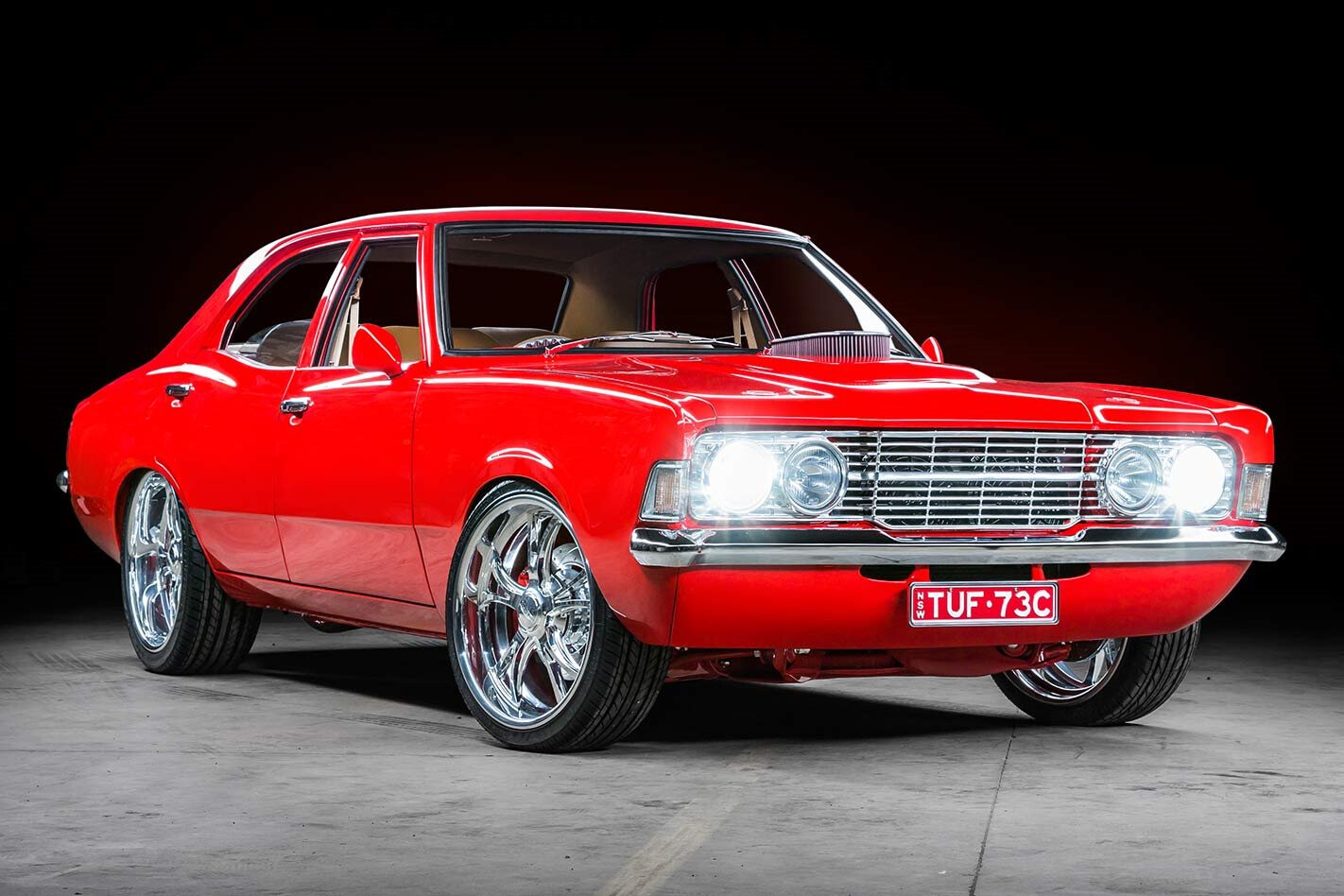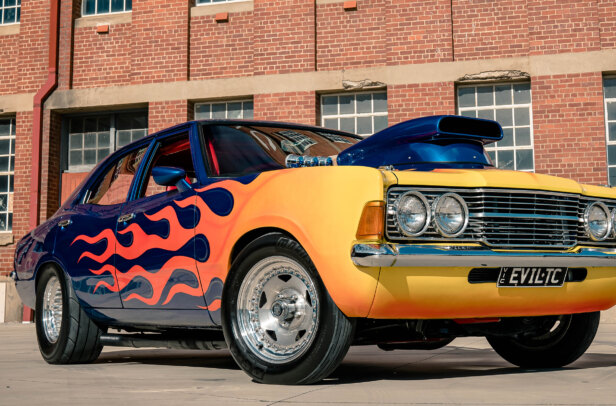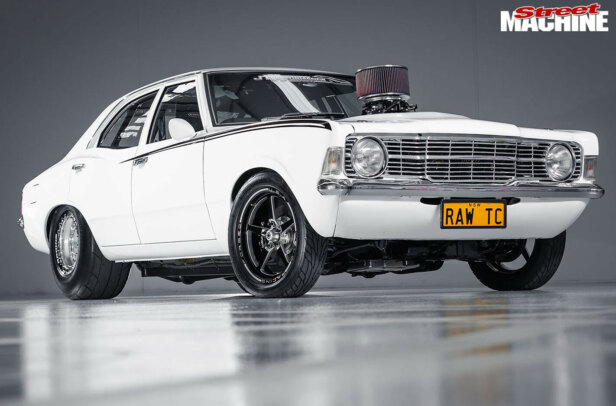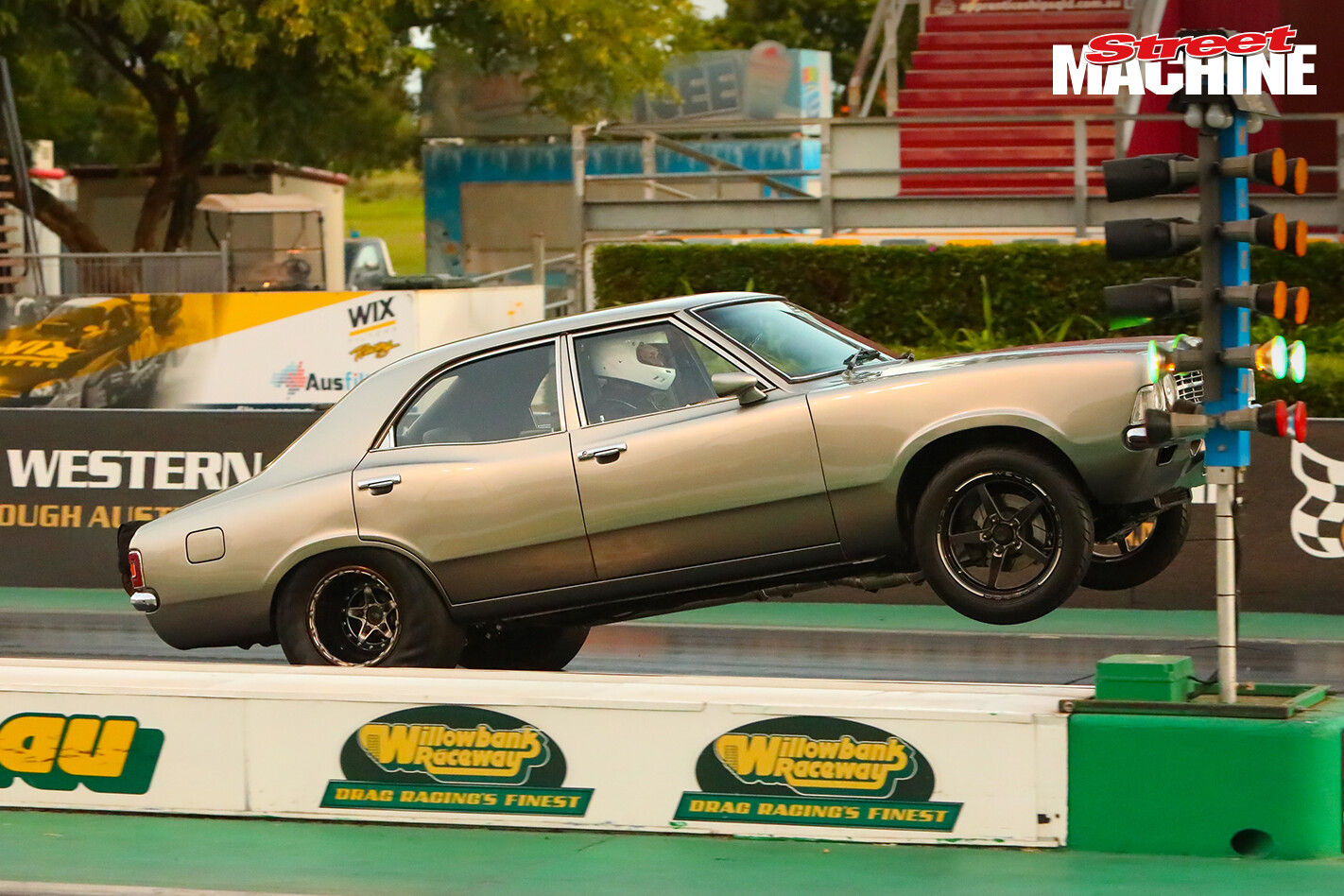This article on David’s Cortina was originally published in the July 2018 issue of Street Machine magazine
I’M GOING to let you in on a little secret: my first car was a TC Cortina, a 2.0-litre/four-speed version that I purchased for $1500 – the sum total of my hard-earned cash from working at my parents’ car wash over the summer holidays. It had a brown interior and a bit of rust in the quarters, but what sold me was the graphic equaliser. Fancy!
The stunning machine you see here started life in a similar fashion, the first car David Xuereb ever purchased, as a 14-year-old from a car yard on Sydney’s Parramatta Road.
“I drove it home behind the old man, who was in the truck,” David recalls. “It was a 250 XL that was a tan colour, but we used to call it something else: baby-poo brown. I drove it around with the standard motor for a while when I didn’t have a licence. I used to drive it to work sometimes when it rained; my dad wanted me to ride the pushbike, but I thought: ‘Bugger that!’”
It wasn’t long before David slapped on a coat of Monza Red – as did a lot of people in the 80s – and put a hot 250 in it. Then around 1987 things started to get serious: “I got big ideas of putting GT running gear in the Cortina, so I did that. I actually had a Boss motor in it – a 302 Windsor with Cleveland heads, Top Loader and a nine-inch and I used to take it to the drags at Oran Park.”
Through the 90s, David took a bit of time off from cars while he did all the grown-up stuff like getting married, buying a house, and having kids. But he never got rid of the Cortina; it just sat in the corner under a cover waiting for its time to come. After around five years, David started cruising it around every now and then.
The doubleskinned bonnet was made using a flat four-cylinder bonnet for the inner skin. The ‘power hump’ of the six-cylinder is still on the outside but now has a rather large hole in it where the air cleaner punches through
Fast-forward 10 years or so to 2006, and a few more ideas came into David’s head.
“I thought I might just tub it and get some bigger wheels under it,” he says. “Then we started fixing rust, and I was never happy with the dash, so I thought: ‘I’m going to cut this out.’ My cousin Paul was with me and he had some big ideas too, but once we pulled the dash out, it was sort of all over then – it got stripped right back to a shell.”
If you’re wondering where all the red paint went, here’s your answer. The straight red tinter from Protec covers every undercarriage part, including the springs, shocks and suspension arms. Check out the coil springs and brake calipers – it’s not easy getting them looking that good!
It was actually while helping out a neighbour with the rebuild of a ’57 Chev that David got inspired to take the Cortina to the next level.
“I was away from cars for a while, just concentrating on work and family, but the Chev made me think: ‘I can do this.’”
The original plans for a set of tubs and putting it back on the street got waylaid with the decision to paint the car red underneath as well.
“I’d always wanted to do something real, real nice,” David says. “Half the problem was, I’d met the likes of Paul Sant from ProFlo and Rod Cordingley the painter – they’re artists. They just do a fantastic job; it can’t be just normal, it was turning out too good, so I thought: ‘Let’s keep going.’”
There are 364 cubic inches of Windsor punching out 560hp at the crank. More than enough to get the lightweight Cortina moving along
As David wanted to start with a blank canvas, every single hole in the car was welded up; if a hole was needed, they drilled a new one. Before laying on the paint, it was necessary to make sure they’d got everything right and wouldn’t need to drill any more holes, which meant effectively building the car twice.
“I put the car together in grey primer, drove it around the block, made sure it all worked, then pulled it apart – which was pretty hard – then painted it and put it back together.”
As with the rest of the car, if it’s not painted red, it’s polished. Even the alloy AFR heads got the ‘grind, fill, sand, repeat’ treatment
Perhaps the greatest indicator of the level of dedication that went into the build is the paint finish on the undercarriage. Every part that’s not polished stainless is painted in the same luscious red tinter as the rest of the car. All the factory-pressed suspension arms and crossmembers have been high-filled, sanded and prepped as nicely as the external bodywork on the car, as have the engine block and heads.
The engine not only looks pretty, it goes pretty hard as well, thanks to the boys at C&B Performance. The Dart 302 block has been stroked and bored out to 364ci and filled with Scat rotating gear and a set of JE pistons. An Edelbrock Performer Air-Gap intake and Demon 750 double-pumper feed the beast through AFR heads. All up, she’s good for 560hp at the crank, and every one of them can be heard through the twin three-inch exhaust.
While there’s plenty of performance in the engine bay, the interior is all about comfort and class, and is way more upmarket than I remember my old Cortina being! There isn’t a single piece that hasn’t been touched, with flat floors, a fabricated dashboard filled with Stewart Warner gauges, and four seats – the whole lot swathed in gorgeous saddle-brown leather and more of that mile-deep red paint.
“Louie from Ingleburn came out and got all the board work done in 2015, made the console and then came back after it was painted to put the interior together,” David says.
The fully customised interior features a fabricated dashboard, electric Lexus seats and a full-length console by Louie from Ingleburn. The design was a collaboration between David and Louie and the result is a classy and modern look. The Cortina logo was burned into the leather on the console, which houses the B&M Pro Ratchet shifter
“The front seats are from a Lexus, and Louie fabricated the rear ones to match.”
It’s not too hard to figure out why the car turned out so nice when you look at the mathematics of it, David reckons. “Me, my cousin Paul and my brother Mark did most of the work. Mark panel-beated it to probably 85 per cent, then Rod did another 50 per cent on top of that, because it ain’t 100 per cent, it’s more than that!” he laughs.
The rear seats were fabricated to match the fronts. Only two passengers can fit in the back now, thanks to the sizeable tubs required to fit the 20×10 rims and full-length console
The show judges tend to agree, with the Cortina picking up over a dozen trophies at its first two shows, including People’s Choice at Summernats 31 and the Coolest Ride Award at the Victorian Hot Rod & Cool Rides Show. I’m pretty sure that 14-year-old sneakily driving home from the car yard all those years ago never imagined he’d have one of the best cars in the country one day.
DAVID XUEREB
1973 TC CORTINA XL
Paint: Protec red tinter
DONK
Type: Ford Windsor
Capacity: 364ci
Inlet: Edelbrock Air Gap
Carb: Demon 750cfm DP
Heads: AFR
Valves: 2.02in (in), 1.65in (ex)
Cam: 250/[email protected], 0.580in lift
Pistons: JE
Crank: Scat forged
Conrods: Scat forged
Radiator: Custom aluminium, twin 11in thermos
Exhaust: 1.75in extractors, 3in exhaust, Hurricane muffler
Ignition: ICE
SHIFT
’Box: C4
Converter: Dominator 4800rpm high-stall
Diff: 9in, 31-spline, Mark Williams centre, 3.7:1 gears
BENEATH
Springs: Lowered King springs (f & r)
Shocks: Monroe (f & r)
Steering: Stock
Brakes: Wilwood discs (f & r)
ROLLING STOCK
Rims: Schott Tomahawk; 19×8 (f), 20×10 (r)
Rubber: Nankang Noble Sport; 215/35/19 (f), 255/35/20 (r)




Comments